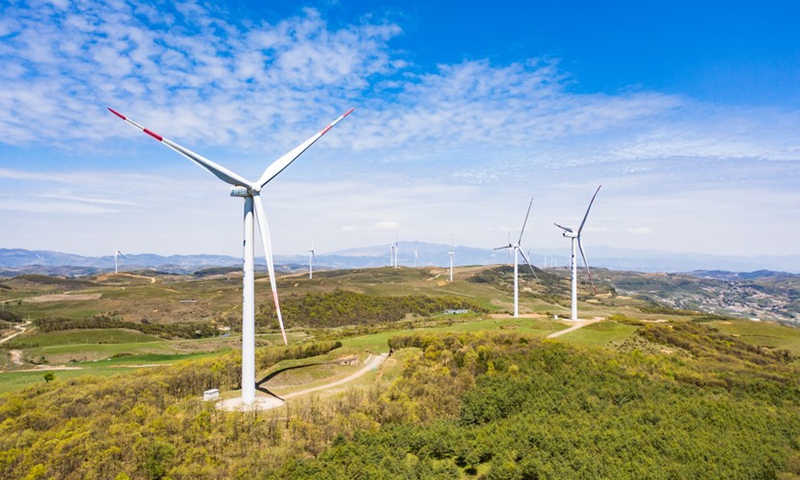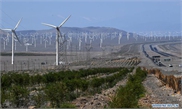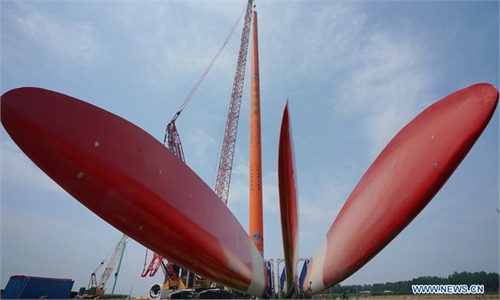China pushes ahead major renewable energy projects

Aerial photo taken on April 27, 2020 shows wind power installations in Weining County, southwest China's Guizhou Province. (Photo: Xinhua)
China has been pushing forward the construction of major wind power and photovoltaic (PV) bases in sandy areas, rocky areas and deserts, a practical move under a tangible plan ahead of the opening of the UN Climate Change Conference COP26, where global leaders will discuss policies to tackle climate change.
The construction of wind power and solar power stations with an installed capacity of 30 million kilowatts in northern and northwestern sandy areas, rocky areas and deserts kicked off in mid-October, according to a statement by China's top economic planner, the National Development and Reform Commission (NDRC).
The stations are in North China's Inner Mongolia Autonomous Region and Northwest China's Gansu Province, Ningxia Hui Autonomous Region and Qinghai Province.
The ongoing wind power and PV projects showed China's firm determination to follow a green path and achieve its carbon peak and carbon neutral goals on time, analysts said.
The statement from the NDRC, published on its website on Friday, came after some Western countries and media organizations pressured China to make more radical commitments and efforts to reduce emissions at the COP26 conference, including broadening the scope of the national carbon trading market.
"As a developing country, China has done its best to make commitments and put them into practice, so as to achieve its environmental protection goals," Shi Dinghuan, chairman of the World Green Design Organization and a former advisor to China's State Council, told the Global Times on Sunday.
China promised to increase wind and solar power capacity to more than 1,200 gigawatts by 2030 and raise the share of non-fossil fuels in its primary energy consumption to 25 percent, according to the country's published pledge on the website of the UN Framework Convention on Climate Change.
Shi said that the cumulative installed capacity of China's new-energy power bases, including hydro, wind and solar, will surpass every country around the world, showing that the largest developing country has been stepping up efforts to pursue renewable energy and readjust its industrial and energy structures.
The installation was part of an enormous pledge by China to build 100 gigawatts of wind and solar capacity.
On October 16, China's largest single PV project in a sandy area with an installed capacity of 2 million kilowatts began work in Kubuqi, a desert region in Inner Mongolia, which enjoys effective sunlight of more than 3,180 hours each year on average.
Shi added that the western areas of China are rich in power resources, but these resources are located in remote areas, so power transmission becomes the key point in the renewable power projects.
"China has established many ultra-high voltage transmission lines, which can achieve cross-regional power transmission more effectively," Shi said, noting that in the future, China could speed up the construction of distributed power stations, which will reduce the losses caused by long-range power transmission.




